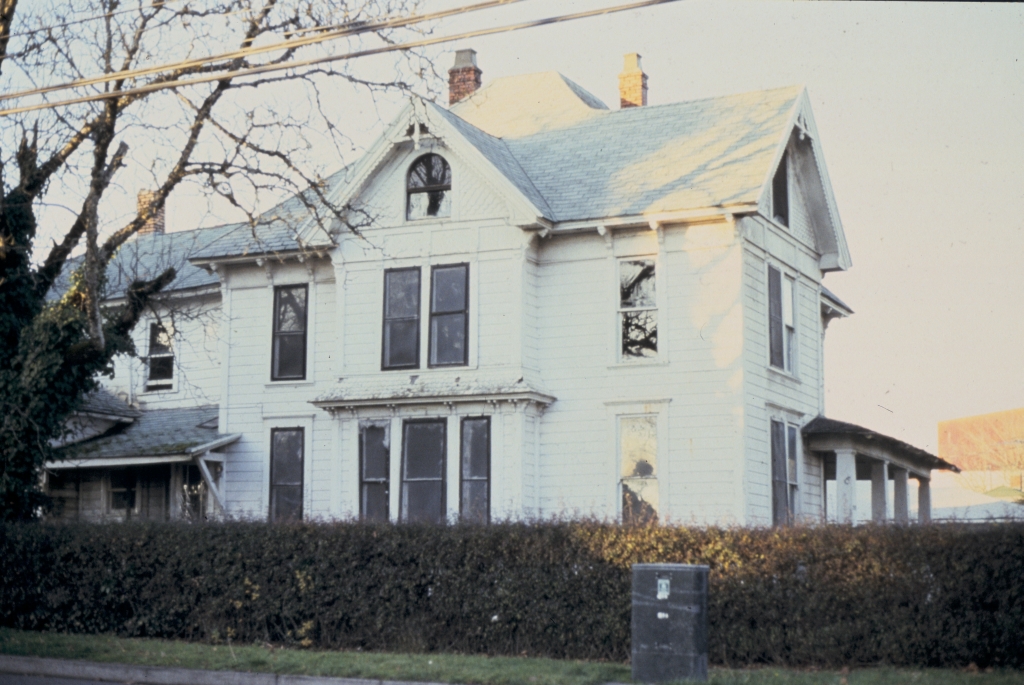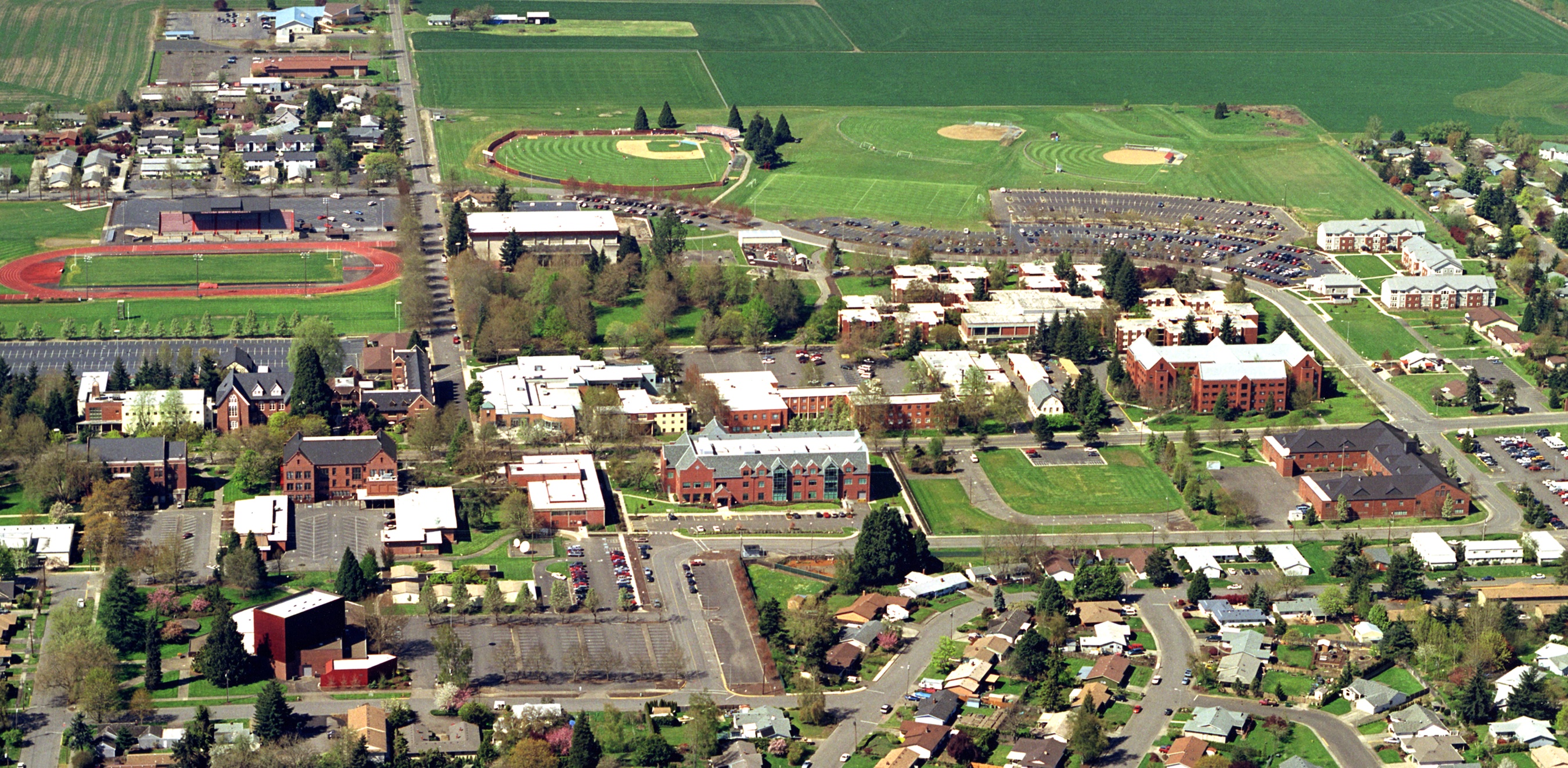Monmouth’s claim to fame as Oregon’s last town to prohibit the sale of alcohol ended in 2002 when voters passed a ballot measure overturning a law that had its beginnings in the mid-nineteenth century. In the early 1850s, more than a dozen families of Disciples of Christ churches in the Monmouth, Illinois, area moved to Oregon to establish the town. Proceeds from the sale of the town lots were used to establish a college under the supervision of the local Disciples of Christ Church. Monmouth University opened in 1856, and the town passed its first ordinance—prohibiting the sale of alcohol—in 1859.
Although located in the middle of Polk County farmland, Monmouth had a more scholastic and religious character than the neighboring town of Independence, which was located along the Willamette River and whose first business was a saloon. Until the early twentieth century, the leaders of Monmouth, the university, and the church were often the same people.
Throughout the town's history, however, the population has been dependent on the success of the university and surrounding farms. The town has also experienced the tensions inherent among private businesses, religious interests, and a public university.
In 1881, a narrow-gauge rail line, the Oregonian Railroad, connected Monmouth to Dallas and other communities. A year later, Monmouth University became the publicly owned Oregon Normal School. The tracks were torn up in 1934.
The 1930s saw other changes in Monmouth. The new concrete surface of Highway 99W brought more traffic through town. The state changed the name of the normal school to the Oregon College of Education (OCE) and expanded its curriculum to four years to better train teachers. One thing did not change, as voters twice gave majorities to ballot measures continuing the prohibition on alcohol sales.
In 1940, the City of Monmouth started one of the few city-owned electrical utilities in Oregon and began providing city residents with electricity. During World War II, the city grew with families who had been removed from land taken for the construction of the Camp Adair training base and with some of the tens of thousands of soldiers who trained there. After the war, OCE expanded as veterans used the GI Bill to attend college, bringing the town's population to several thousand.
The post-war population surge overwhelmed public schools in Independence and Monmouth, and in 1949 the two cities and surrounding communities formed the Central School District to deal with overcrowding. The college continued to operate a campus elementary school as a training school for its teacher education students until 1984.
Monmouth’s population increased steadily through the 1980s and 1990s, as the college grew—it became Western Oregon University in 1997—and families sought lower-cost housing than they could find in Corvallis and Salem. Monmouth and Independence remained separate towns, but their boundaries grew together in the early 2000s. While many community activities involve residents of both cities, their governments have limited joint operations. The two cities created a special district to set up a fiber optic communications network, Monmouth Independence Networks—MINET (or Minetfiber)—which brought commercial-grade Internet service to residents.
In 2020, Monmouth had about 11,110 residents and the university about 5,700 students, one-third of whom were commuters.
-
![John W. Howell House, 212 N. Knox St., Monmouth, built 1891, about 1987.]()
Monmouth, John Howell House, ca 1987.
John W. Howell House, 212 N. Knox St., Monmouth, built 1891, about 1987. Oreg. State Hist. Preserv. Ofc.
-
![Gas car of Independence-Monmouth Railway at Monmouth, July 1911.]()
Monmouth, RR depot, 1911.
Gas car of Independence-Monmouth Railway at Monmouth, July 1911. Salem Public Lib. Oreg. Historic Photo Collec., 4539
-
![Craven House, 858 E. Main St., Monmouth, built 1869.]()
Monmouth, Craven House, unk date.
Craven House, 858 E. Main St., Monmouth, built 1869. Oreg. State Hist. Preserv. Ofc.
-
![Graves-Fisher-Strong House, 391 E. Jackson, Monmouth, built 1892.]()
Monmouth, Graves-Fisher-Strong House, unk date.
Graves-Fisher-Strong House, 391 E. Jackson, Monmouth, built 1892. Oreg. State Hist. Preserv. Ofc.
-
![Graves-Fisher-Strong House, 391 E. Jackson, Monmouth, built 1892, about 1987.]()
Monmouth, Graves-Fisher-Strong House, ca 1985.
Graves-Fisher-Strong House, 391 E. Jackson, Monmouth, built 1892, about 1987. Oreg. State Hist. Preserv. Ofc.
Related Entries
Map This on the Oregon History WayFinder
The Oregon History Wayfinder is an interactive map that identifies significant places, people, and events in Oregon history.
Further Reading
Jansson, Kyle. “The Changing Climate of Oregon’s Driest Town: Monmouth’s Prohibition Ordinances, 1859-2001.” Oregon Historical Quarterly 102:3 (Fall 2001), 336-351.
McArthur, Scott. Monmouth, Oregon: The Saga of a Small American Town. Monmouth, Ore.: Scott McArthur, 2004.









